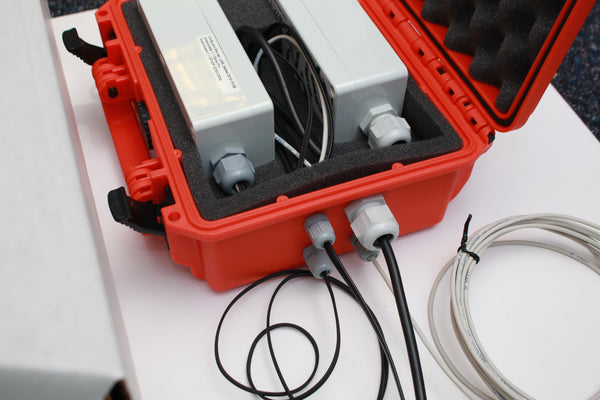Performance of Monitoring Equipment in the Extreme Cold
Performance of Monitoring Equipment in the Extreme Cold
WINDLogger is a rugged weather monitoring solution that offers a high degree of customization in terms of available sensors and battery life optimization, while being able to operate within a broad range of ambient temperatures.
When selecting a weather monitoring solution, it is important to assess all of its technical characteristics and not base the purchasing decision on just a single metric. For example, there are many products that claim to operate at temperatures as low as -40°C or even less, but specify their rated battery life at room temperature (25°C). In the actual application, however, battery life may quickly diminish to less than 50% of its rated value due to the influence of low temperature. A system is only as strong as its weakest part, and monitoring systems are no exception: it is necessary to assess the value offered by the solution as a whole, considering factors such as battery life and available sensor inputs in addition to operating temperature.
The reason why batteries have a reduced performance in the extreme cold is that they depend on a chemical reaction to provide current. As temperature is reduced, this chemical reaction slows down and the battery is unable to deliver the same amperage it would provide at room temperature. Batteries also experience an increase in internal resistance when exposed to the cold, increasing operating losses and further reducing the amount of usable energy they can provide. In other words, a battery life specified at 25°C will not hold if the product is intended for use in the extreme cold.
Another key factor that must be verified in addition to rated battery life is the logging interval. A shorter interval places a higher load on the battery and depletes it at a faster rate. Therefore, if a product claims to have a longer battery life than its competitors, it is also necessary to verify if the logging intervals are the same.
Battery power should be selected according to the application. For example, if a weather monitor is to operate at a remote location with limited access to electricity, a long battery life becomes critical, or it will not be possible to obtain continuous data about the site conditions. In urban locations, on the other hand, it is possible to sacrifice battery life to have a shorter measurement interval or to monitor more variables, since power availability is not an issue.
In addition to batteries, liquid crystal displays are also negatively affected by low temperatures, since they can literally freeze and suffer permanent damage. LCD technology provides little or no added value in extreme temperature applications, so data loggers that implement them might be unsuitable.

WINDLogger is a weather monitoring solution that offers high value, allowing the simultaneous measurement of wind speed, wind direction and temperature. The operating range for the wind data logger can be used from -40°C to 70°C. The battery has a life of 1 year with a 1-minute logging interval, and up to 3 years if the interval is increased to 10 minutes.
It is important to note that when optional sensors are added to the WINDLogger, the rated operating conditions of the overall solution may vary due to differences among individual sensors. It is always necessary to verify that all add-on sensors included are suitable for the intended application. Sensors are as critical as batteries in a reliable weather monitoring solution: there is no point in having a very long battery life if it means compromising the performance of sensors and the quality of the logged data. WINDLogger balances overall system performance and battery life to offer a reliable weather monitoring solution.
WINDLogger offers configuration flexibility according to the specific needs of your application. Contact us today to receive a personalized assessment of your case, in order for us to determine the system configuration that will offer you the best performance.
Leave a comment
Comments will be approved before showing up.







